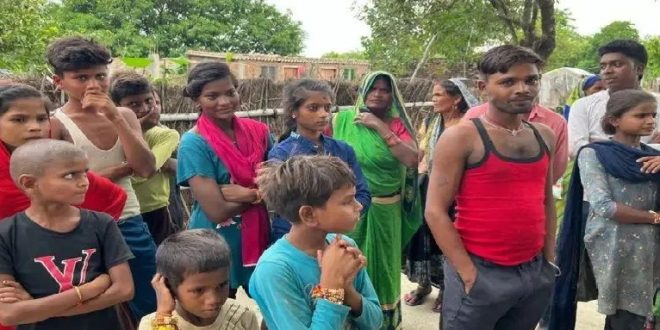06-09-2024
Bureau Report + Agencies
NEW DELHI: Four-year-old Sandhya was sleeping outside her mud hut in India’s Uttar Pradesh state on the night of 17 August when a power cut plunged the village into darkness.
“The wolves attacked within two minutes of the lights going out. By the time we realized what was happening, they had taken her away,” recalls her mother, Sunita.
 Sandhya’s body was found lying next day in the sugarcane farms, some 500 metres from her home.
Sandhya’s body was found lying next day in the sugarcane farms, some 500 metres from her home.
Earlier in the month, in a neighboring village, eight-year-old Utkarsh was sleeping under a mosquito net when his mother spotted a wolf creeping into their hut.
“The animal lunged from the shadows. I screamed, ‘Leave my son alone!’ My neighbors rushed in, and the wolf fled,” she recounts. Since mid-April, a wave of wolf attacks has terrorized around 30 villages in Bahraich district, near the border with Nepal. Nine children and an adult have been carried off and killed by the wolves. The youngest victim was a one-year-old boy, and the oldest was a 45-year-old woman. At least 34 others have been injured.
Fear and hysteria have gripped the affected villages. With many village homes lacking locks, children are being kept indoors, and men are patrolling the darkly lit streets at night. Authorities have deployed drones and cameras, set traps and used firecrackers to scare away the wolves. So far, three wolves have been captured and relocated to zoos. Such attacks on humans are extremely rare and most involve wolves infected with rabies, a viral disease that affects the central nervous system. A rabid wolf will typically make multiple assaults without consuming the victims.
A report by the Norwegian Institute for Nature Research reported 489 “relatively reliable cases” of wolf attacks in 21 countries including India between 2002 and 2020. Only 26 of them were fatal. Around 380 people were victims of “rabid attacks”.
There have been only two confirmed cases of wolf-related fatalities in North America over the past 50 years, Dave Mech, a renowned American biologist who specializes in wolf behaviour, told media. This is despite a population of approximately 70,000 wolves spread across North America.
 Nestled between a river and forests, parts of Bahraich have long been a traditional wolf habitat. Located in the floodplain of the Ghaghara River, the district, home to 3.5 million people, is prone to seasonal flooding.
Nestled between a river and forests, parts of Bahraich have long been a traditional wolf habitat. Located in the floodplain of the Ghaghara River, the district, home to 3.5 million people, is prone to seasonal flooding.
Heavy rains and flooding during the monsoons have drastically altered the landscape. The swollen river has inundated the forests, potentially driving the wolves out in search of food and water. Indian wolves prey on black buck, chinkara (Indian gazelle) and hare.
“Climate change is a gradual process but flooding can lead to habitat disruptions for the wolves, forcing them into human settlements in search of food,” says Amita Kanaujia of the Institute of Wildlife Sciences in Lucknow University.
Why would children be a target of the wolves in search of food?
During an investigation into killings of a large number of children in wolf attacks in Uttar Pradesh villages in 1996, wildlife experts found there was minimal supervision of children because most victims came from impoverished single-parent households, usually led by mothers.
In these poor Indian villages, livestock is often better protected than children. When a hungry wolf, facing a depleted prey habitat and limited access to livestock, encounters such vulnerable children, they become more likely targets. “Nowhere else in the world have we witnessed surges of wolf attacks on children,” Yadvendradev Jhala, a leading Indian scientist and conservationist, told me.
 Pressmediaofindia
Pressmediaofindia




